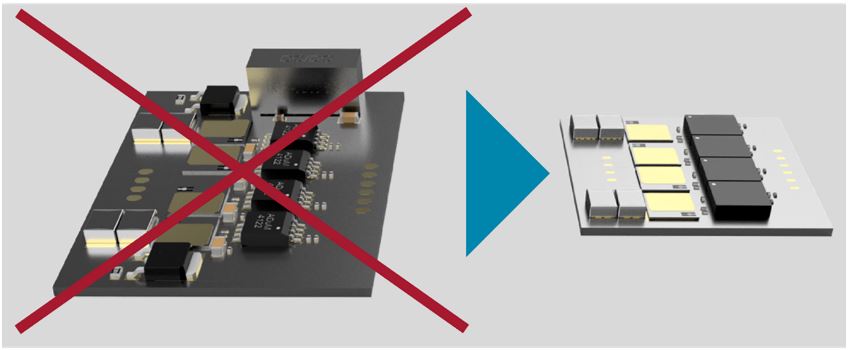Simplify Designs and Reduce Overall Systems Cost by Eliminating External Power Supplies
Introduction
Cost, design time, and unexpected results: These are three of the most significant challenges that weigh on the minds of project managers who are involved with the design of power modules. Whether for use in electric vehicle charging stations, clean energy, variable speed drives, IT equipment power supplies, or any of the hundreds of other applications, modern power modules almost always have one thing in common: Gate drivers are used to control the semiconductor power switches, and optimal power provision can be a challenge. This article reviews current design challenges and discusses innovative solutions to minimize them.
Challenges in Designing Power Supplies
Gate driver options are extensive, and—with conventional types—the design challenges continue well beyond selection of the driver. Switches need a bias power source to supply the gate power, and this frequently demands the use of multiple power supplies isolated from the controlled ground.
Designing these power supplies occupies significant valuable engineering time. Adding components to the design adds to the cost, size, and complexity of a power module—both in the design and in the bill of materials (BOM)—and the added complexity increases the risk of unexpected results during design validation and in application.
Conventional gate drivers also typically use a bootstrap circuit to create the floating voltage required for controlling the high-side switches. Choosing the optimal combination of components to use in this circuit is, however, often challenging.
An easier design process would be to use a gate driver that also supplies the power needed to control the switches and a single capacitor to create the floating voltage for the high-side switches.
A Simpler System
A solution has emerged that eliminates the need for external power supplies and that simplifies the design process while reducing cost and complexity: Power-Thru technology from Allegro. It includes—within the integrated circuit—a single, novel, magnetic coupling device that transfers the gate on/off logic signal with the power needed to drive the gate of the switch, eliminating the need for external auxiliary power. The complete electrical isolation provided by their magnetic coupling makes Power-Thru gate drivers ideal for use in high-side, low-side, and isolated applications alike.

Figure 1: The Allegro Power-Thru technology uses magnetic coupling to deliver switching power with logic, eliminating the need for external auxiliary power supplies and achieving smaller system size, fewer components/simplified BOM, less design complexity, and reduced cost.
Free Up Design Time
The Allegro Power-Thru gate drivers eliminate the need for auxiliary power supplies, which can reduce BOM costs, system size, and build complexity, recoup engineering design time, improve the likelihood of early success in testing and validation, and increase reliability in application. Unique design and construction make the Allegro Power-Thru gate drivers easy to use: The need to specify only a single capacitor can further reduce design time and improve the likelihood of early design success.
When considering all aspects of the construction of a power module, compared to conventional solutions, the Allegro Power-Thru gate drivers can deliver cost savings, design simplification, and reliability and performance improvements.
Copyright 2022, Allegro MicroSystems.
The information contained in this document does not constitute any representation, warranty, assurance, guaranty, or inducement by Allegro to the customer with respect to the subject matter of this document. The information being provided does not guarantee that a process based on this information will be reliable, or that Allegro has explored all of the possible failure modes. It is the customer's responsibility to do sufficient qualification testing of the final product to ensure that it is reliable and meets all design requirements.
Copies of this document are considered uncontrolled documents.